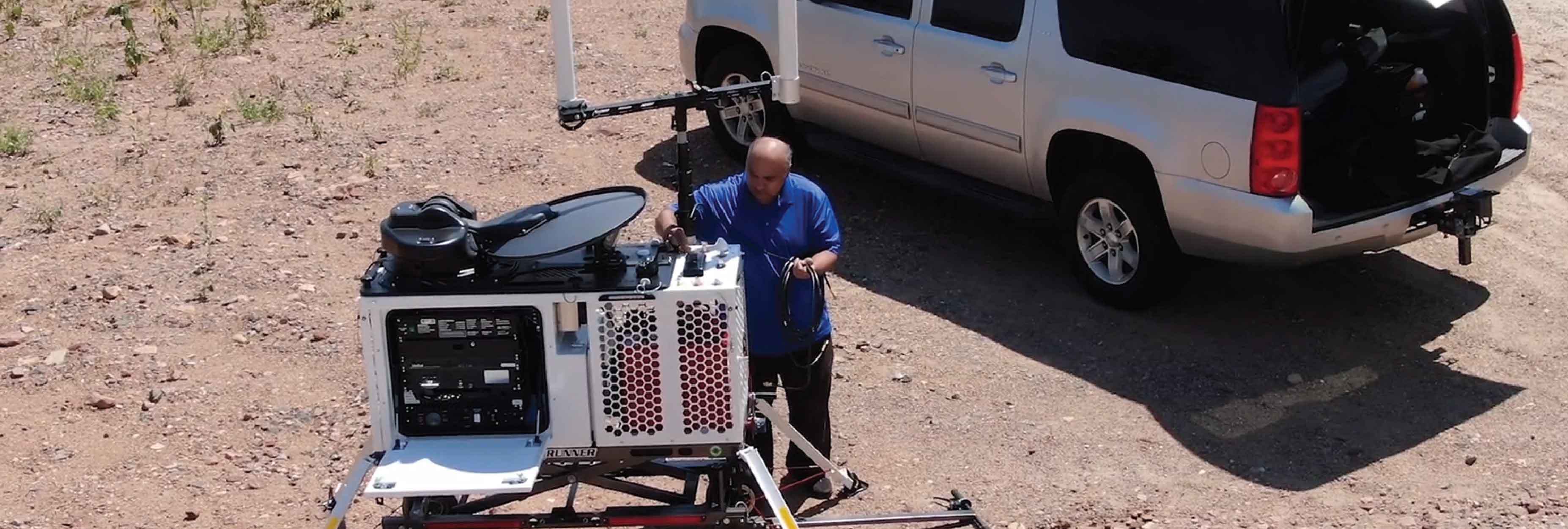When disasters strike, first responders need to make informed, safe, and effective decisions to mitigate the impact of a crisis and save lives. To do so, public safety officials need access to a reliable communications network to facilitate and coordinate resources in a moment’s notice.
Through the First Responder Network Authority’s (FirstNet Authority) ongoing consultations with public safety, we learned they needed a coverage solution that they could deploy almost anywhere at any time. The FirstNet Compact Rapid Deployable (CRD) is a state-of-the-art portable communications asset exclusively designed to meet public safety’s unique coverage needs.
Key differentiators of the Compact Rapid Deployable
The CRD can be owned and operated by an agency, giving them the flexibility to deploy the unit in a moment’s notice. CRDs can be deployed by a single person in 15 minutes, can provide more than a one-mile radius of coverage, and they are built to withstand all climates. Agencies can transport a CRD via road, water, or air.
First responders have a variety of connectivity options when it comes to operating the CRD. The deployable creates, enhances, or expands the FirstNet network, with many backhaul options, including prioritized satellite service, an ethernet connection, or LTE. There are also multiple power options, including a backup battery, gasoline-powered generator, shore power, or a DC power connection through a vehicle.
A quick solution to an all-hazards response
The CRDs can help in all-hazards responses, such as hurricanes, tornadoes, earthquakes, or any other event that may impact traditional communications infrastructure. Because CRDs are designed to be self-contained and easily transported, the technology is ideal for use in hard-to-access locations. This has made them especially helpful during wildfires, which often occur in in remote locations that lack cellular infrastructure.
A CRD is also useful during planned events, such as races, parades, and festivals. Band 14 radiated by a CRD is only accessible to public safety responders on the FirstNet network. This means public safety is not competing with the public for network access.
The CRD can also assist with continuity of operations (COOP) and minimizing disruptions to public safety agencies’ daily operations. With the various connectivity options, the CRD can support agency COOP requirements in cases of planned outages or unanticipated issues.
CRD boosts communication capabilities during the NCAR fire in Boulder, CO
Philip Kirmuss, the Radio Systems Manager for the City of Boulder, experienced firsthand how CRDs quickly resolve communication issues. A wildfire started near the National Center for Atmospheric Research (NCAR) facility, in the wildland urban interface near Boulder, Colorado. Limited coverage in the area meant that public safety officials managing the incident experienced communications difficulties. Kirmuss and his team deployed a CRD to help local first responders who were unable to access a wireless network on their cell phones. “Within fifteen minutes, [we] established communications with the satellite, turned on our CRD, and were able to actually get coverage and connectivity,” said Kirmuss.
With CRDs available nationwide to all FirstNet users, first responders now have more mission-ready choices available through FirstNet. To learn more about how CRDs can support your agency’s communication needs, contact your FirstNet Authority Public Safety Advisor.




















